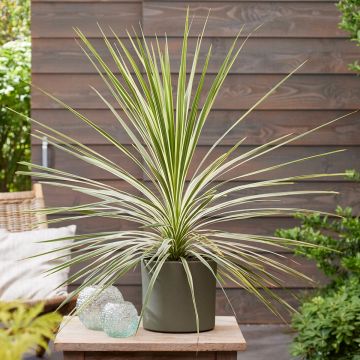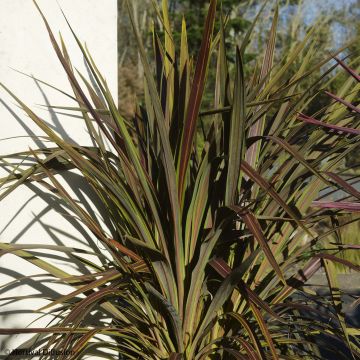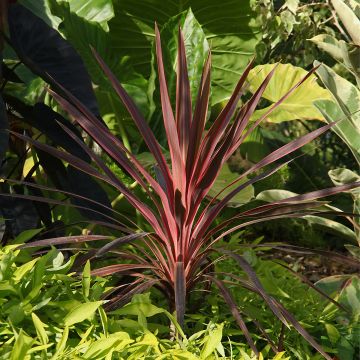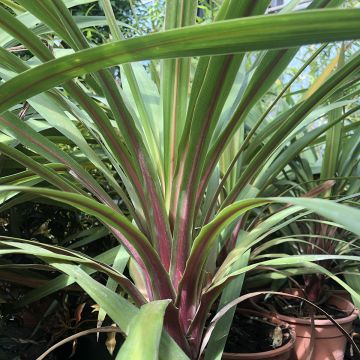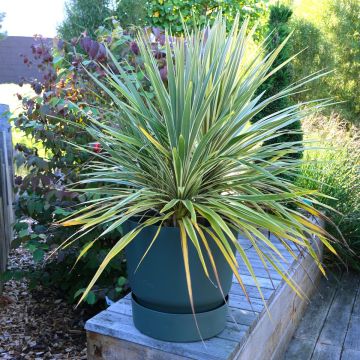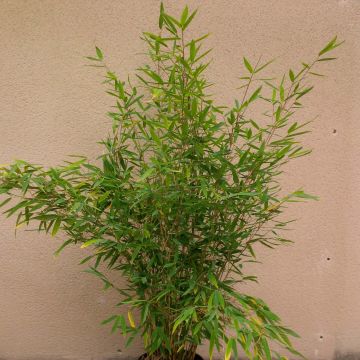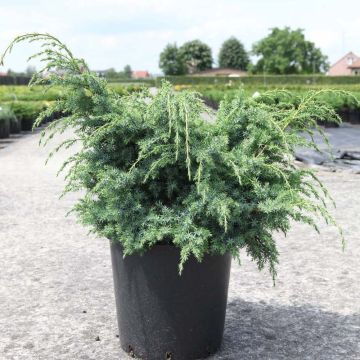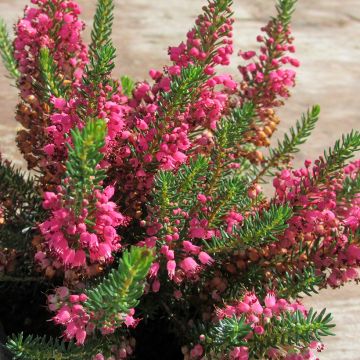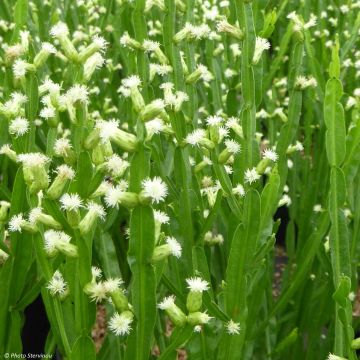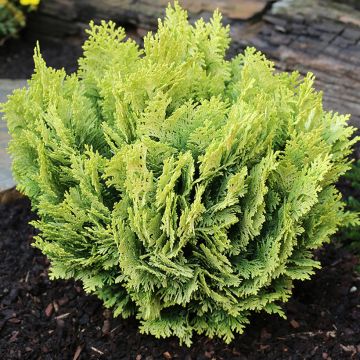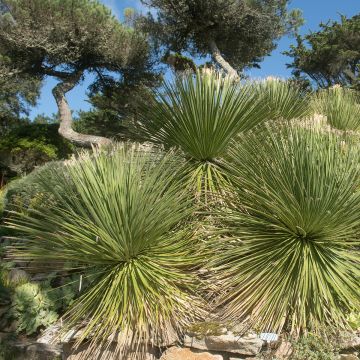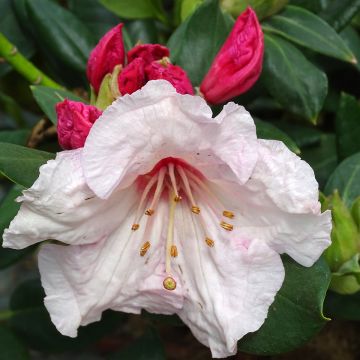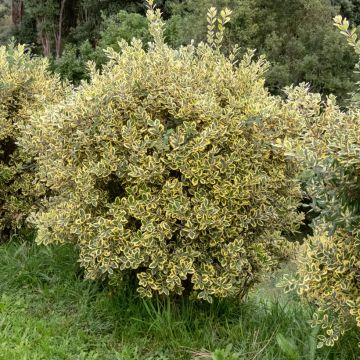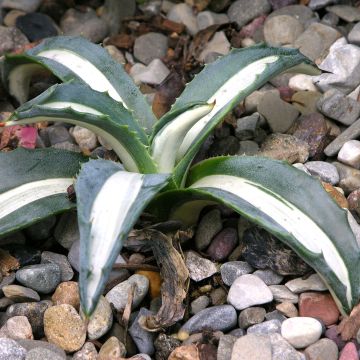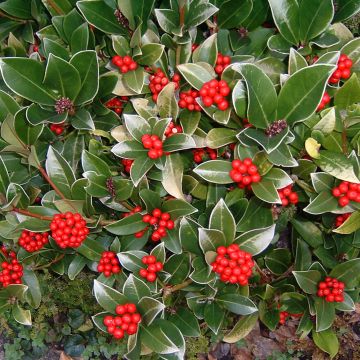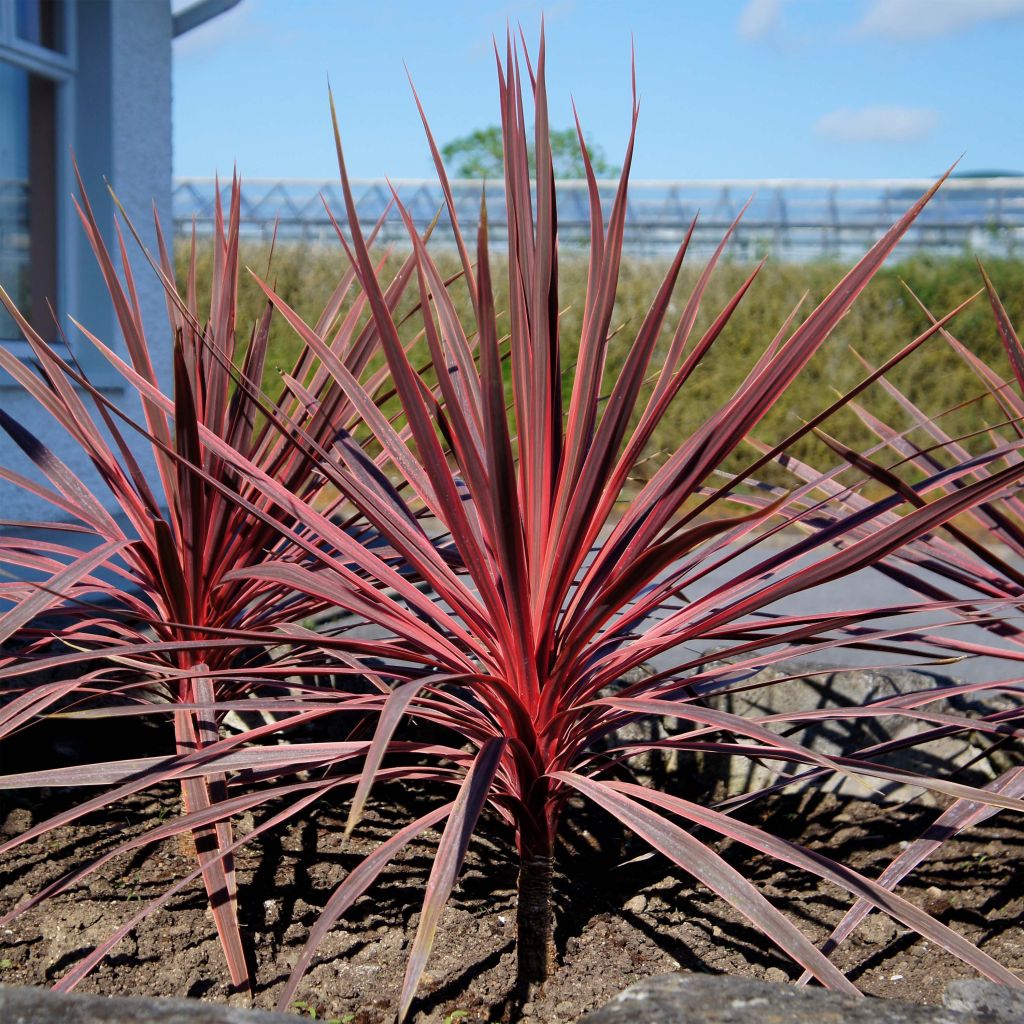

Cordyline australis Charlie boy - Cabbage Tree
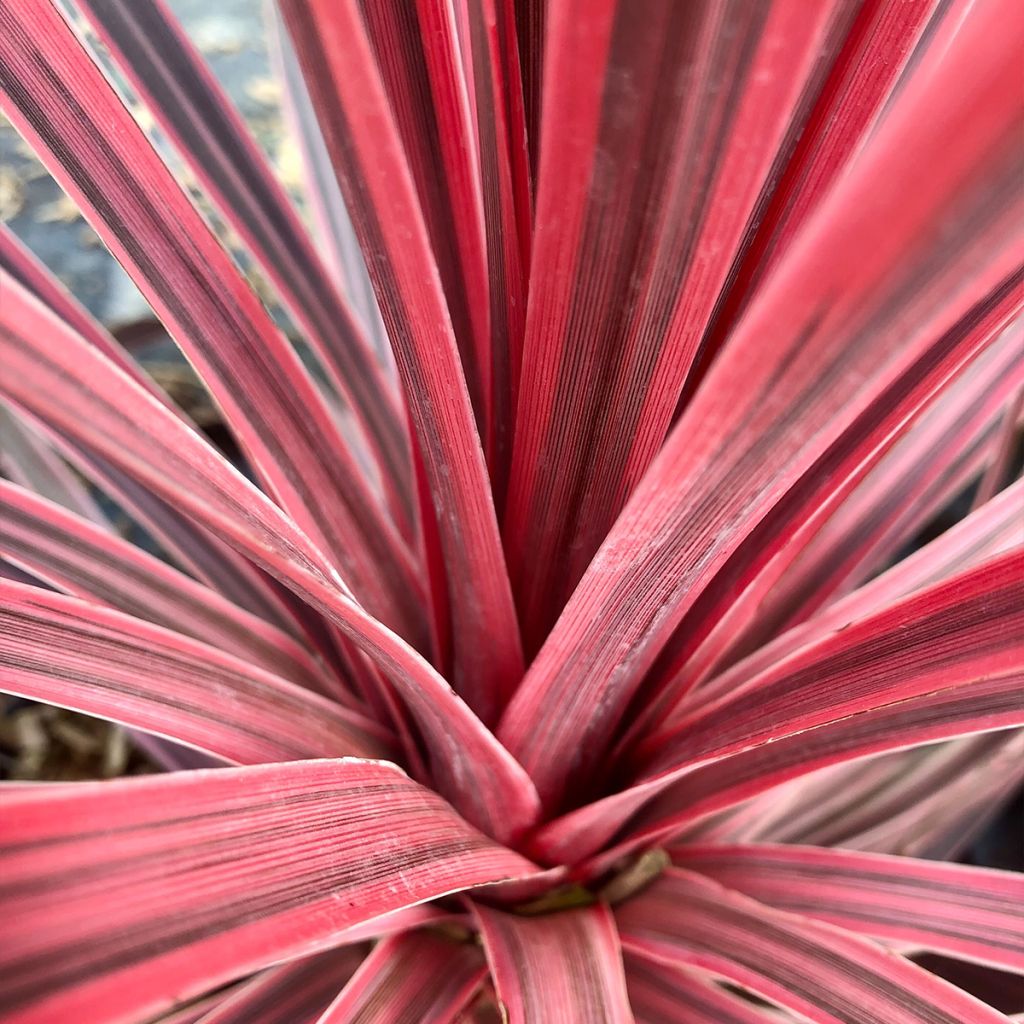

Cordyline australis Charlie boy - Cabbage Tree
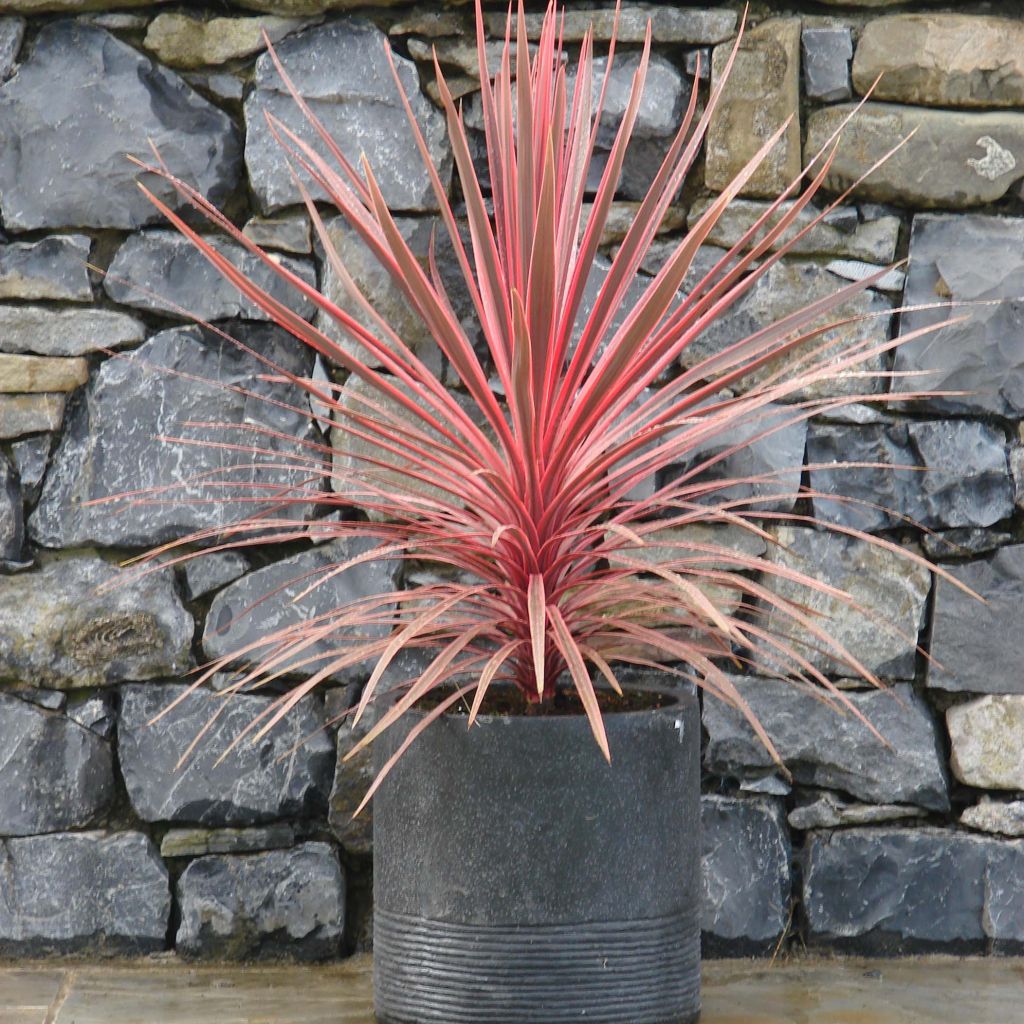

Cordyline australis Charlie boy - Cabbage Tree
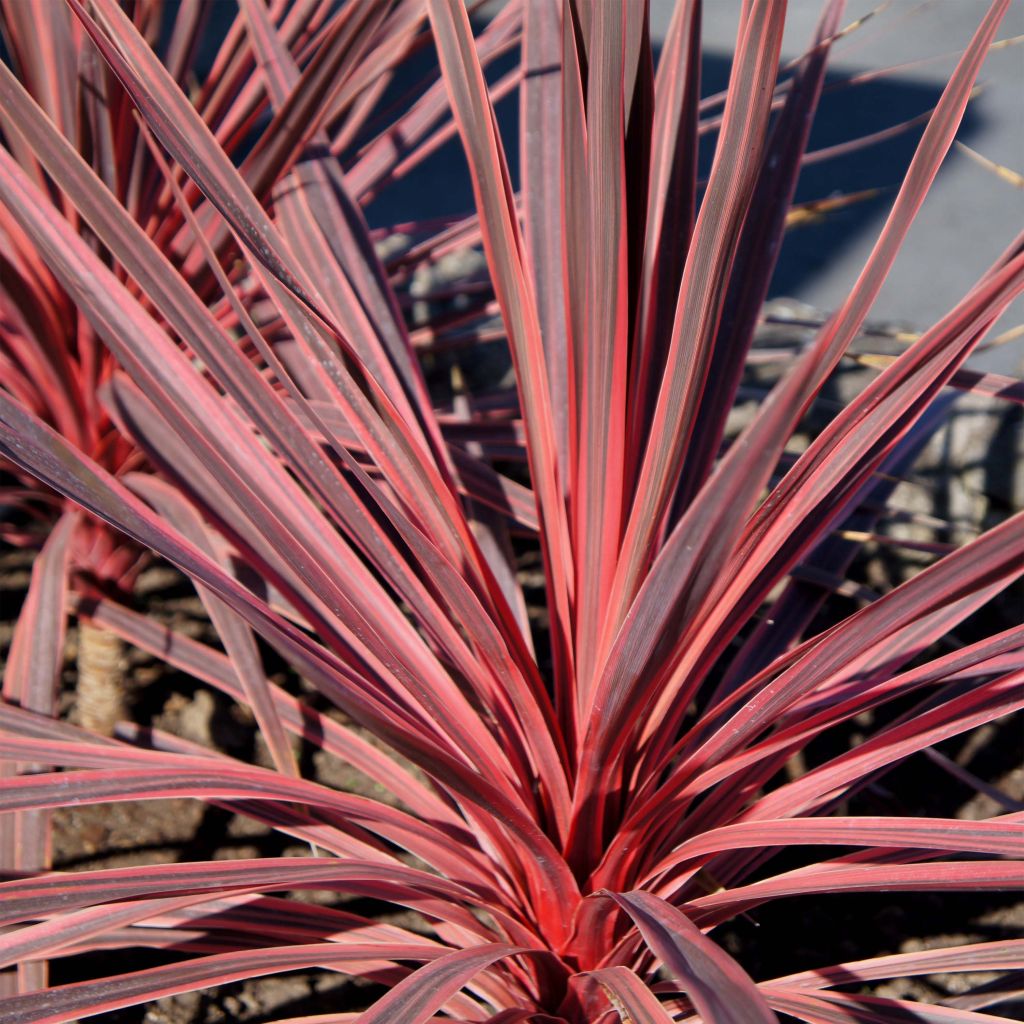

Cordyline australis Charlie boy - Cabbage Tree
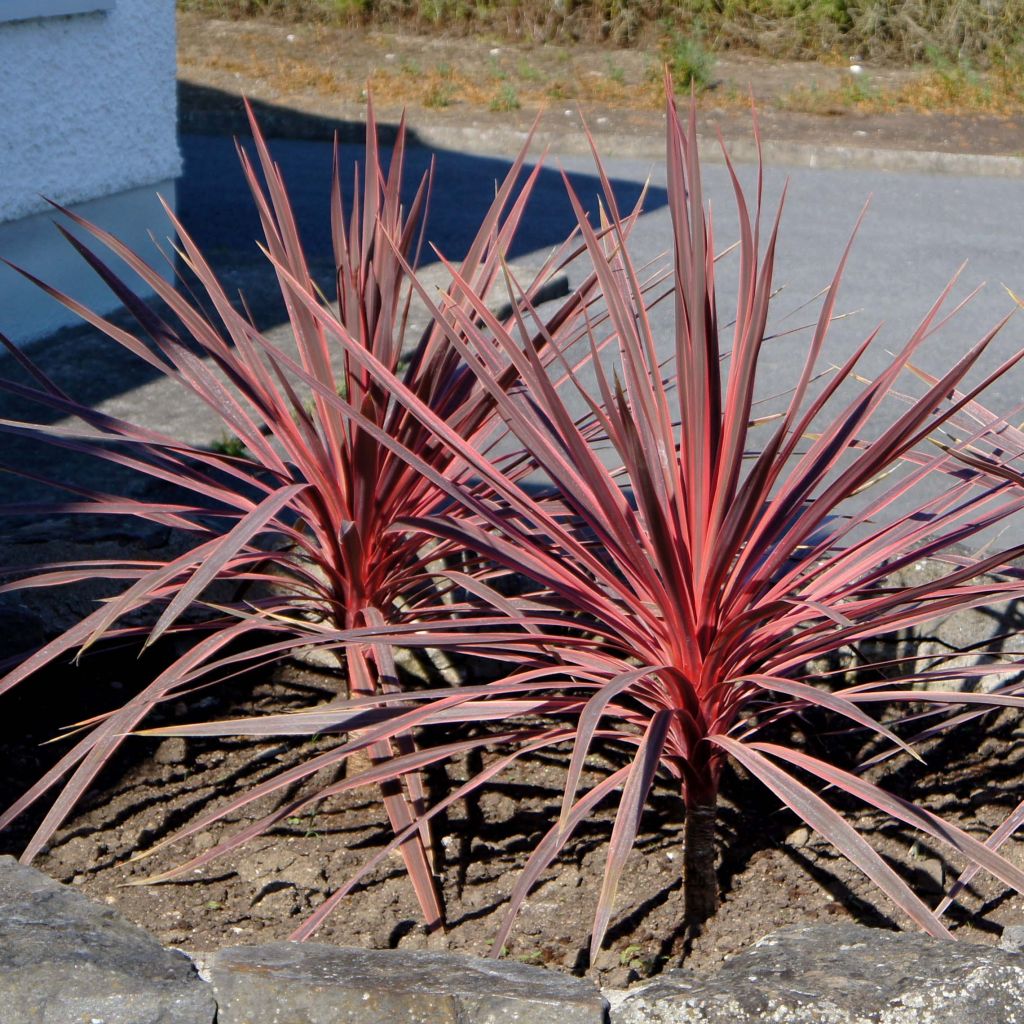

Cordyline australis Charlie boy - Cabbage Tree
Cordyline australis Charlie boy - Cabbage Tree
Cordyline australis Charlie boy®
Cabbage Tree, New Zealand Cabbage palm
Beautiful plant with magnificent colours. I planted them in May but 5 months later, I have 2 out of 3 left as one didn't make it... and there hasn't been any frost yet.
Lilie, 08/10/2024
This item cannot be shipped to the selected country
Delivery charge from €5.90
More information
Schedule delivery date,
and select date in basket
This plant carries a 24 months recovery warranty
More information
We guarantee the quality of our plants for a full growing cycle, and will replace at our expense any plant that fails to recover under normal climatic and planting conditions.
From €5.90 for pickup delivery and €6.90 for home delivery
Express home delivery from €8.90.

Does this plant fit my garden?
Set up your Plantfit profile →
Description
Cordyline australis Charlie Boy, still not widely available, is particularly interesting for its resistance to cold and wet climates. With its small size and beautiful foliage, pink-edged on a purple background, this variety is suitable for small gardens as well as for growing in pots or as an indoor plant during the winter. Its fluorescent palm-like appearance always creates a great impact, and it is always a pleasant surprise when its large fragrant white-pink panicles of flowers appear in summer. In the ground, this superb perennial plant should be reserved for regions spared from severe frosts.
Cordyline australis is a tree-like perennial plant belonging to the agave family, endemic to New Zealand. In its natural habitat, this plant can reach a height of 20m (65 ft 7 in) and forms a robust trunk that branches out into numerous leafy heads, which can grow up to 1m (3 ft 4 in) long. The cordyline is found in a wide range of habitats, such as forest edges, riverbanks, and open areas, particularly near marshes.
The Charlie Boy variety distinguishes itself with its small size, slow growth, and remarkably colourful foliage. Once well-established, it can survive short frosts of around -10°C. The plant has a rosette-like leafy habit in its juvenile state (for several years), and then it forms a small tree with a single trunk and branches adorned with leafy tufts. This variety typically reaches an average height of 1.50m (4 ft 11 in), with a spread of 80cm. Its evergreen leaves are long and narrow, sword-shaped, pointed and slightly arching, and measure 40 to 80 cm in length and 3 to 7 cm in width at the base. They have numerous parallel veins and are richly coloured. Flowering occurs in summer on mature plants with a trunk. Each branch can develop once it has produced a flower stalk. The small white-pink flowers, nectar-rich and delicately scented, are borne on large dense panicles measuring 60 to 80 cm in length. The fruit is a white round berry measuring 5 to 7 mm in diameter and highly appreciated by birds. On mature plants, the trunk bark is pale to dark grey, corky and fissured, and has a spongy texture.
Resistant to wind and sea spray, it is a good plant for coastal areas, in moderately dry soil. The Cordyline Charlie Boy can be planted in the centre of a bed, as a small tree in a row, as a windbreak, or as a solitary plant in a temperate garden, as it particularly enjoys coastal climates. It can be grown anywhere in a large pot that can be moved from the terrace to an unheated or minimally heated conservatory in winter. In pots, it is necessary to ensure proper watering and feeding. This remarkable plant, just like bananas, proteas, cannas, Grevillea, bamboos, giant miscanthus, or castor oil plants, will give a truly exotic look to our gardens and terraces.
Report an error about the product description
Cordyline australis Charlie boy - Cabbage Tree in pictures
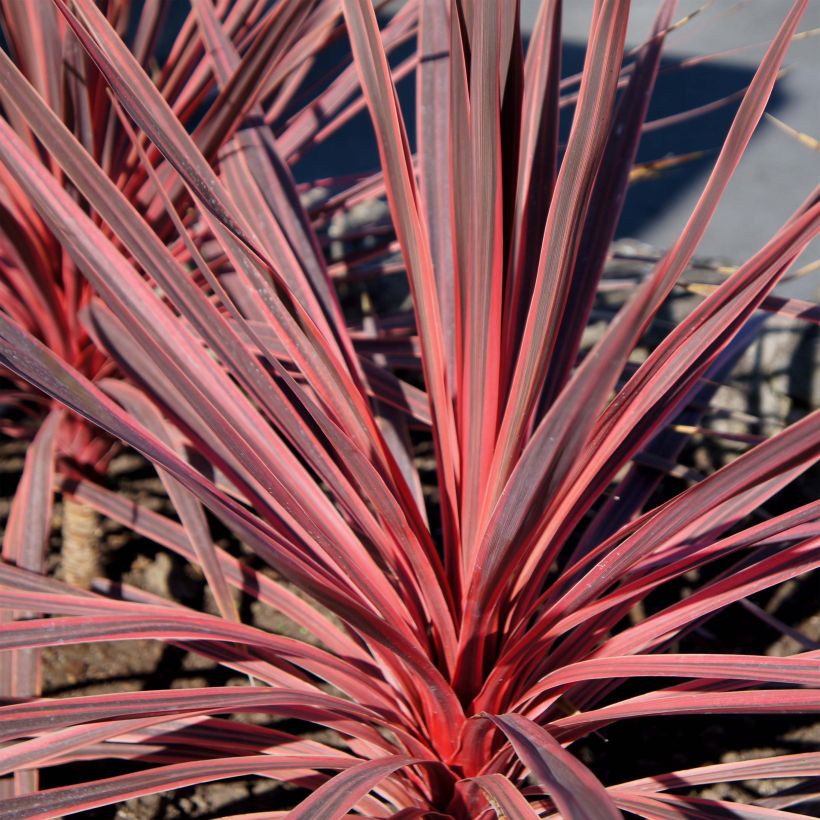

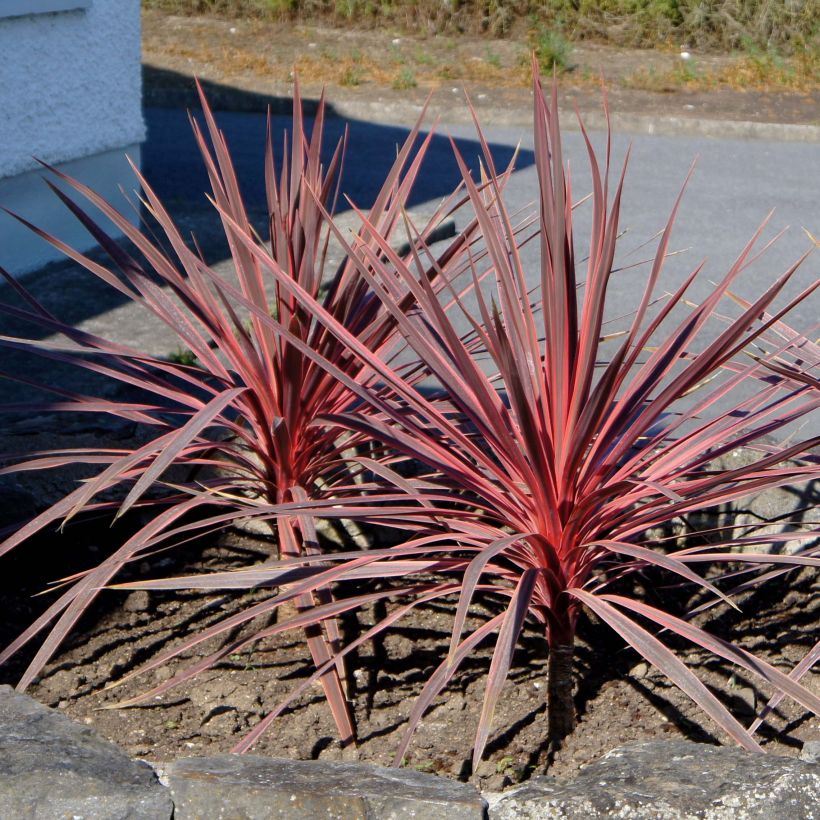

Plant habit
Flowering
Foliage
Botanical data
Cordyline
australis
Charlie boy®
Agavaceae
Cabbage Tree, New Zealand Cabbage palm
Cultivar or hybrid
Other Cordyline
Planting and care
The 'Charly Boy' Cordyline australis thrives in the sun in moist and well-drained soil. It can withstand winds and sea spray, but place it sheltered from cold north winds. It appreciates intense summer heat but dislikes waterlogged or overly dry soils. When planting in spring, add some sand. In winter, protect the top of the bush with fleece. Cordyline does not require any specific pruning, just remove dry leaves and faded flowers. Only water in case of drought. It has few pests as it does not attract predators. It grows well in a large pot, even indoors if the room is very bright and not too warm.
Planting period
Intended location
Care
-
, onOrder confirmed
Reply from on Promesse de fleurs
Evergreen shrubs
Haven't found what you were looking for?
Hardiness is the lowest winter temperature a plant can endure without suffering serious damage or even dying. However, hardiness is affected by location (a sheltered area, such as a patio), protection (winter cover) and soil type (hardiness is improved by well-drained soil).

Photo Sharing Terms & Conditions
In order to encourage gardeners to interact and share their experiences, Promesse de fleurs offers various media enabling content to be uploaded onto its Site - in particular via the ‘Photo sharing’ module.
The User agrees to refrain from:
- Posting any content that is illegal, prejudicial, insulting, racist, inciteful to hatred, revisionist, contrary to public decency, that infringes on privacy or on the privacy rights of third parties, in particular the publicity rights of persons and goods, intellectual property rights, or the right to privacy.
- Submitting content on behalf of a third party;
- Impersonate the identity of a third party and/or publish any personal information about a third party;
In general, the User undertakes to refrain from any unethical behaviour.
All Content (in particular text, comments, files, images, photos, videos, creative works, etc.), which may be subject to property or intellectual property rights, image or other private rights, shall remain the property of the User, subject to the limited rights granted by the terms of the licence granted by Promesse de fleurs as stated below. Users are at liberty to publish or not to publish such Content on the Site, notably via the ‘Photo Sharing’ facility, and accept that this Content shall be made public and freely accessible, notably on the Internet.
Users further acknowledge, undertake to have ,and guarantee that they hold all necessary rights and permissions to publish such material on the Site, in particular with regard to the legislation in force pertaining to any privacy, property, intellectual property, image, or contractual rights, or rights of any other nature. By publishing such Content on the Site, Users acknowledge accepting full liability as publishers of the Content within the meaning of the law, and grant Promesse de fleurs, free of charge, an inclusive, worldwide licence for the said Content for the entire duration of its publication, including all reproduction, representation, up/downloading, displaying, performing, transmission, and storage rights.
Users also grant permission for their name to be linked to the Content and accept that this link may not always be made available.
By engaging in posting material, Users consent to their Content becoming automatically accessible on the Internet, in particular on other sites and/or blogs and/or web pages of the Promesse de fleurs site, including in particular social pages and the Promesse de fleurs catalogue.
Users may secure the removal of entrusted content free of charge by issuing a simple request via our contact form.
The flowering period indicated on our website applies to countries and regions located in USDA zone 8 (France, the United Kingdom, Ireland, the Netherlands, etc.)
It will vary according to where you live:
- In zones 9 to 10 (Italy, Spain, Greece, etc.), flowering will occur about 2 to 4 weeks earlier.
- In zones 6 to 7 (Germany, Poland, Slovenia, and lower mountainous regions), flowering will be delayed by 2 to 3 weeks.
- In zone 5 (Central Europe, Scandinavia), blooming will be delayed by 3 to 5 weeks.
In temperate climates, pruning of spring-flowering shrubs (forsythia, spireas, etc.) should be done just after flowering.
Pruning of summer-flowering shrubs (Indian Lilac, Perovskia, etc.) can be done in winter or spring.
In cold regions as well as with frost-sensitive plants, avoid pruning too early when severe frosts may still occur.
The planting period indicated on our website applies to countries and regions located in USDA zone 8 (France, United Kingdom, Ireland, Netherlands).
It will vary according to where you live:
- In Mediterranean zones (Marseille, Madrid, Milan, etc.), autumn and winter are the best planting periods.
- In continental zones (Strasbourg, Munich, Vienna, etc.), delay planting by 2 to 3 weeks in spring and bring it forward by 2 to 4 weeks in autumn.
- In mountainous regions (the Alps, Pyrenees, Carpathians, etc.), it is best to plant in late spring (May-June) or late summer (August-September).
The harvesting period indicated on our website applies to countries and regions in USDA zone 8 (France, England, Ireland, the Netherlands).
In colder areas (Scandinavia, Poland, Austria...) fruit and vegetable harvests are likely to be delayed by 3-4 weeks.
In warmer areas (Italy, Spain, Greece, etc.), harvesting will probably take place earlier, depending on weather conditions.
The sowing periods indicated on our website apply to countries and regions within USDA Zone 8 (France, UK, Ireland, Netherlands).
In colder areas (Scandinavia, Poland, Austria...), delay any outdoor sowing by 3-4 weeks, or sow under glass.
In warmer climes (Italy, Spain, Greece, etc.), bring outdoor sowing forward by a few weeks.



































